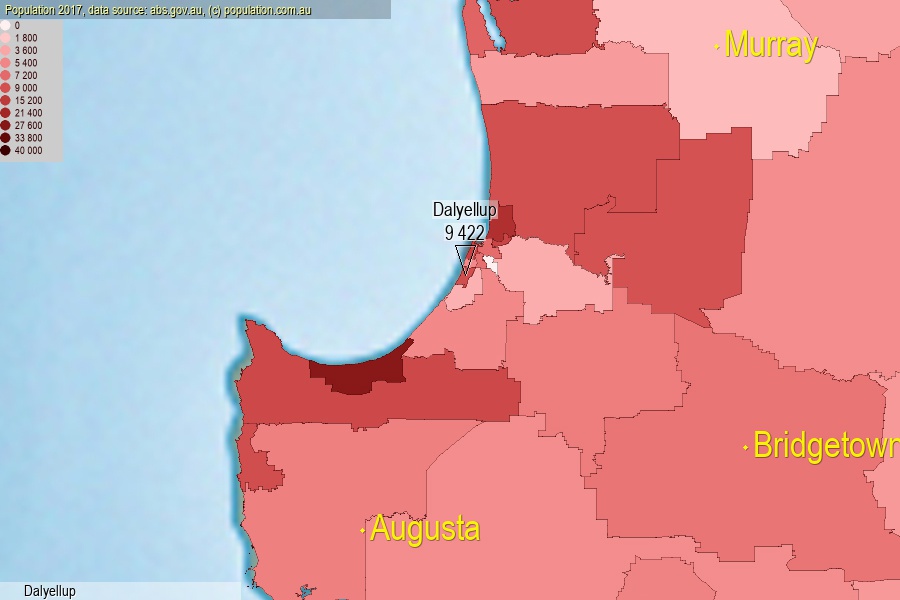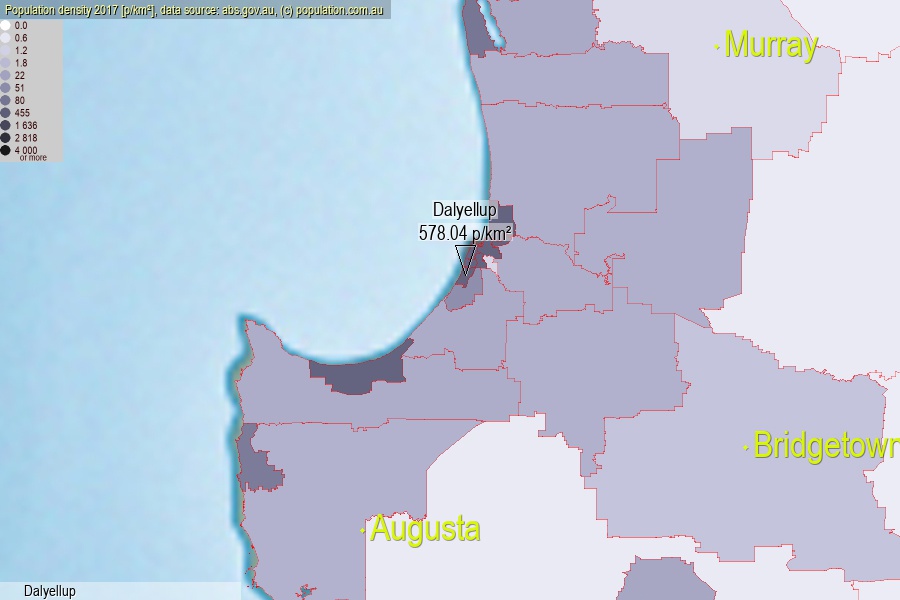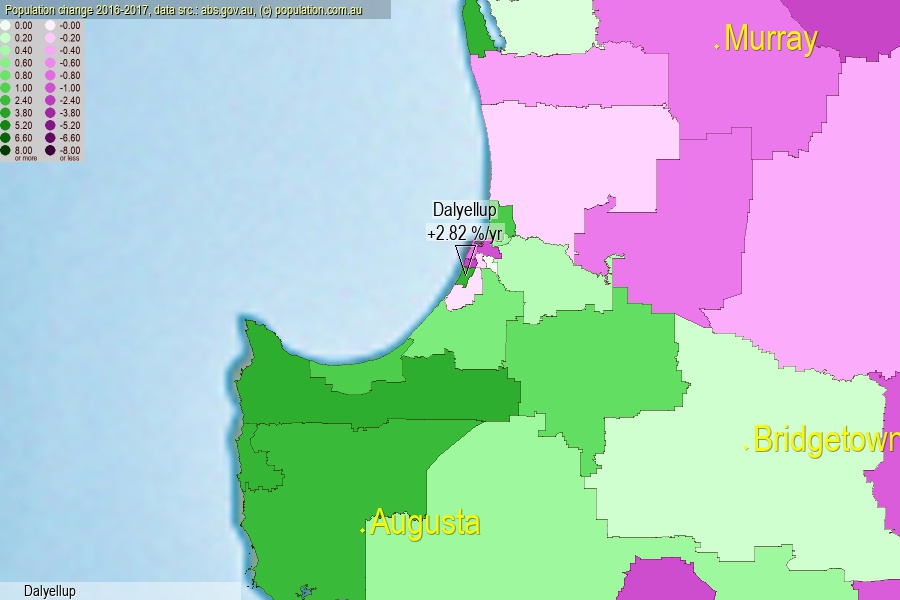 population.com.au
population.com.auLast official estimated population of Dalyellup (as Statistical Area Level 2) was 9 422 people (on 2017-06-30)[2]. This was 0.04% of total Australian population and 0.364% of WA population. Area of Dalyellup is 16.30 km², in this year population density was 578.04 p/km² . If population growth rate would be same as in period 2016-2017 (+2.82%/yr), Dalyellup population in 2025 would be 11 765. [0]



Click to enlarge. Dalyellup is located in the center of the images.
Population [people], population density [p./km²] and population change [%/year] [2]
View borders » (new window) [4]
[2001-2002] +82.38 %/Yr.
[2002-2003] +69.46 %/Yr.
[2003-2004] +52.89 %/Yr.
[2004-2005] +49.51 %/Yr.
[2005-2006] +30.18 %/Yr.
[2006-2007] +17.86 %/Yr.
[2007-2008] +18.24 %/Yr.
[2008-2009] +16.52 %/Yr.
[2009-2010] +12.94 %/Yr.
[2010-2011] +10.45 %/Yr.
[2011-2012] +7.62 %/Yr.
[2012-2013] +7.31 %/Yr.
[2013-2014] +4.56 %/Yr.
[2014-2015] +3.42 %/Yr.
[2015-2016] +2.05 %/Yr.
[2016-2017] +2.82 %/Yr.
[0] Calculated with linear interpolation from officially estimated population
[1] Read more about SA2 and Australian Statistical Geography Standard (ASGS) on abs.gov.au
[2] Population data from Australian Bureau of Statistics (Population and density: 2017; change: 2016-2017)
[3] Digital Boundaries: Australian Statistical Geography Standard (ASGS) 2016.
[4] Border coordinates are simplifyed using Ramer-Douglas-Peucker algorithm.